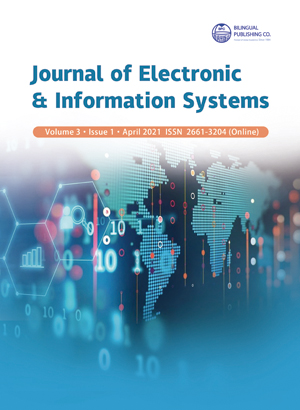An Integrated Emergency Response Tool for Developing Countries: Case of Uganda
DOI:
https://doi.org/10.30564/jeisr.v3i1.3440Abstract
This paper presents a First responder emergency response tool (EMApp) as a step towards achieving integrated emergency care in developing countries, the case of Uganda. The EMApp prototype has potential to support health emergency response from various emergency stakeholders. This innovation is in line with strategic plans to embrace technologies towards the establishment of integrated social services such as emergency healthcare services (EHS) in Uganda. We describe the prototype and provide its functionalities that can be further enhanced to enable access to emergency services and save life. The possible assumptions, potential challenges and recommendations to implement and deployment of such a system are provided. There is currently no such integrated emergency response system in Uganda as is the case in many other developing countries. For future studies, there is need to deploy the tool and assess its impact on the communities.
Keywords:
Emergency-response;E-health;E-infrastructure;E-service;Health-careReferences
[1] Margaret E.Kruk, 2008, Emergency Preparedness and Public Health Systems: Lessons for Developing Countries, American Journal of Preventive Med-icine, Pp 529-534, DOI: https://doi.org/10.1016/j.amepre.2008.02.012.
[2] Wikipedia, the online encyclopedia https://en.wiki-pedia.org/wiki/Mobile_technology_in_Africa, 23rd June 2021.
[3] Enock Yonazi, Tim Kelly, Naomi Halewood and Colin Blackman, 2012 "The Transformational Use of Information and Communication Technologies in Africa" eTransform AFRICA.DOI: https://doi.org/10.1596/26791 Corpus ID: 168833751.
[4] Sophie Ireland, 2019, "Revealed: Countries with the Best Health Care Systems, 2019" available on https://ceoworld.biz/2019/08/05/revealed-countries-with-the-best-health-care-systems-2019.
[5] BBC, https://www.bbc.com/news/health-40608253.
[6] Toloo Ghasem, Fitzgerald Gerard, Aitken Peter, Chu Kevin, Ting Joseph, Tippett, Vivienne, 2011, Emer-gency Health Services: Demand & Service Delivery Models- Monograph 1: Literature Review and Ac-tivity Trends. Queensland University of Technology. ISBN: 978-1-921897-11-5.
[7] V.C. Kannan, A. Tenner, H.R. Sawe, M. Osiro, T. Kyobe, E. Nahayo, N.G. Rasamimanana, S. Kivle-han, and R. Moresky, 2020,"Emergency care systems in Africa: A focus on quality" Afr J Emerg Med. 2020; 10(Suppl 1): S65–S72. DOI: https://doi.org/10.1016/j.afjem.2020.04.010.
[8] Kalin Werner, Nicholas Risko, Taylor Burkhold-er, Kenneth Munge, Lee Wallis & Teri Reynolds, Cost–effectiveness of emergency care interventions in low and middle-income countries: a systematic review, Bulletin of the World Health Organization 2020;98:341-352. DOI: http://dx.doi.org/10.2471/BLT.19.241158.
[9] Patience Akumu, 2020 “A Review of COVID-19 and the Health Equality Dilemma in Uganda” Konrad Adenauer Stiftung - KAS.
[10] Brian S. Sorensen, Richard D. Zane, Barry E. Wante, Mitesh B. Rao, Michelangelo Bortolin, Gerald Rock-enschaub 2011, Hospital emergency response check-list "An all-hazards tool for hospital administrators and emergency managers" World Health Organiza-tion. DOI: https://doi.org/10.13140/2.1.3047.6160.
[11] Dowhaniuk, N. Exploring country-wide equitable government health care facility access in Ugan-da. Int J Equity Health 20, 38 (2021). DOI: https://doi.org/10.1186/s12939-020-01371-5.
[12] Werner, K., Tracy Kuo Lin, Nicholas Risko, Martha Osiro, Joseph Kalanzi & Lee Wallis . The costs of de-livering emergency care at regional referral hospitals in Uganda: a micro-costing study. BMC Health Serv Res 21, 232 (2021). DOI: https://doi.org/10.1186/s12913-021-06197-7.
Downloads
How to Cite
Issue
Article Type
License
Copyright © 2021 Swaib Kyanda Kaawaase, Rodney Ekisa Simon

This is an open access article under the Creative Commons Attribution-NonCommercial 4.0 International (CC BY-NC 4.0) License.




 Swaib Kyanda Kaawaase
Swaib Kyanda Kaawaase






